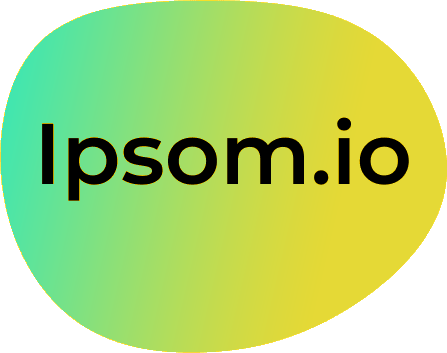Open-source marketing automation platforms offer businesses cost-effective, flexible, and customizable solutions to streamline their marketing efforts. By leveraging these tools, companies can automate tasks such as email campaigns, customer segmentation, and lead nurturing without the constraints of proprietary software. This blog post explores the benefits, key features, and top open-source marketing automation tools available today.
Key Findings
- Cost-Effectiveness: Open-source solutions eliminate licensing fees, making them accessible to businesses of all sizes.
- Flexibility and Customization: Users can tailor the software to meet specific business needs and integrate seamlessly with existing systems.
- Community Support: A global network of developers and users contributes to continuous improvement and innovation.
- Scalability: These platforms can grow with your business, accommodating increasing marketing demands.
- Data Ownership: Businesses retain full control over their data, enhancing security and compliance.
What Are the Advantages of Open-Source Marketing Automation?
Open-source marketing automation offers several advantages that can significantly enhance a business's marketing efforts.
Cost-Effectiveness: Open-source solutions eliminate the need for expensive licensing fees associated with proprietary software, allowing businesses to allocate resources to other strategic initiatives.
Flexibility and Customization: With access to the source code, businesses can tailor the software to meet their specific needs, ensuring seamless integration with existing systems and the ability to adapt to evolving marketing strategies.
Community Support and Continuous Improvement: Open-source platforms benefit from active communities of developers and users who collaborate to enhance the software, providing regular updates, bug fixes, and new features.
Avoidance of Vendor Lock-In: By using open-source software, businesses maintain control over their technology stack, avoiding dependency on a single vendor's roadmap and ensuring the flexibility to switch or modify solutions as needed.
Enhanced Security: The transparency of open-source code allows for regular security audits by the community, leading to prompt identification and resolution of vulnerabilities, thereby enhancing the overall security of the platform.
By leveraging these advantages, businesses can implement a marketing automation solution that is cost-effective, adaptable, and continuously evolving to meet their unique requirements.
External Sources: Learn More
Transform your processes and elevate your success—uncover automation at ipsom.io or connect with us at office@ipsom.io.
How to Choose the Right Open-Source Marketing Automation Tool for Your Business
Selecting the appropriate open-source marketing automation tool is crucial for enhancing your business's marketing efficiency and effectiveness. To make an informed decision, consider the following factors:
1. Define Your Marketing Objectives
Clearly outline your marketing goals, such as lead generation, customer engagement, or sales conversion. Understanding your objectives will help you identify a tool that aligns with your specific needs.
2. Evaluate Key Features
Assess the features offered by various tools to ensure they meet your requirements. Essential features to consider include:
- Email Campaign Management: Ability to create, send, and track email campaigns.
- Lead Management: Tools for capturing, scoring, and nurturing leads.
- Analytics and Reporting: Comprehensive reporting to measure campaign performance.
- Integration Capabilities: Compatibility with existing CRM systems, CMS platforms, and other applications.
3. Consider Scalability and Customization
Choose a tool that can scale with your business growth and offers customization options to tailor the platform to your unique processes.
4. Review Community Support and Documentation
A strong user community and extensive documentation can be invaluable for troubleshooting and optimizing the tool's use.
5. Analyze Total Cost of Ownership
While open-source tools are generally free, consider costs related to hosting, maintenance, and potential development for customization.
Popular Open-Source Marketing Automation Tools
Here are some widely used open-source marketing automation platforms:
- Mautic: Offers features like email marketing, lead management, and campaign tracking.
- Odoo: Provides a suite of business applications, including marketing automation, CRM, and e-commerce.
- Agnitas (OpenEMM): Focuses on email marketing with features like template-based email creation and real-time statistics.
By carefully evaluating these factors and tools, you can select an open-source marketing automation platform that best fits your business needs and objectives.
External Sources: Learn More
Transform your business with seamless automation—visit ipsom.io or get in touch at office@ipsom.io.
Top Open-Source Marketing Automation Platforms to Consider
When exploring open-source marketing automation platforms, several robust options cater to diverse business needs. Below are some noteworthy platforms:
Mautic
Mautic is a comprehensive open-source marketing automation tool that enables businesses to automate marketing processes, personalize customer interactions, and track customer behavior. Its open-source nature allows for high customization, providing complete control over marketing processes and data.
Odoo
Odoo offers a suite of open-source business management applications, including marketing automation features. Users can develop end-to-end customer journeys, create multi-stage campaigns, automate workflows, manage leads, and design emails with drag-and-drop tools. Odoo's modular approach allows businesses to select specific features that suit their needs.
Acquia Campaign Studio
Part of Acquia’s suite of Drupal marketing solutions, Acquia Campaign Studio is a fully featured marketing automation platform with email marketing capabilities. It enables organizations to generate and send multi-channel communications at scale, personalize communications, and easily report on key metrics and results.
OpenEMM
OpenEMM is a free, open-source web-based enterprise application for email and marketing automation. It offers comprehensive functionality for creating and sending emails, evaluating results, and managing leads. Features include an intuitive user interface, template-based mailing creation, automatic bounce management, and real-time graphical statistics.
phpList
phpList is an open-source newsletter and email marketing tool designed to help grow lists of engaged subscribers. It allows users to import and export subscriber data, manage campaigns and newsletters, segment lists, and track statistics. phpList ensures no subscribers receive the same campaign twice and offers features like do-not-send lists to manage unsubscribes.
Mailtrain
Mailtrain is a self-hosted open-source email marketing tool with a focus on simplicity and efficiency. It offers features like detailed tagging for targeted campaigns, a basic yet effective campaign builder, and supports unlimited recipients. Mailtrain is a cost-effective choice for businesses seeking efficient email marketing solutions.
Listmonk
Listmonk is a powerful and simple open-source email campaign software and CMS tool. It offers customer data control, extensive delivery options including WhatsApp and SMS, and is developer-centered, relying on HTML for total control over the product. Listmonk is free and can be downloaded directly from their site.
These platforms provide a range of features to automate and enhance marketing efforts, allowing businesses to choose the solution that best aligns with their specific requirements.
External Sources: Learn More
Transform your operations and boost efficiency—get started with ipsom.io or contact us at office@ipsom.io.
Integrating Open-Source Marketing Automation with Existing Systems
Integrating open-source marketing automation tools with existing systems can significantly enhance operational efficiency and customer engagement. To achieve a seamless integration, consider the following steps:
1. Assess Compatibility of Existing Systems
Begin by evaluating your current infrastructure, including Customer Relationship Management (CRM) systems, Enterprise Resource Planning (ERP) platforms, and data warehouses. Understanding the compatibility between these systems and the open-source marketing automation tool is crucial for a smooth integration process.
2. Utilize API-Based Integrations
Open-source marketing automation platforms often provide APIs (Application Programming Interfaces) that facilitate data exchange between systems. Leveraging these APIs enables real-time data synchronization, ensuring that customer information remains consistent across platforms.
3. Implement Middleware Solutions
Middleware acts as a bridge between disparate systems, enabling them to communicate effectively. Utilizing middleware can simplify the integration process by handling data mapping, transformation, and routing, thereby reducing the complexity of direct integrations.
4. Ensure Data Standardization and Security
Standardize data formats and structures across all connected systems to enable smooth data flow. Additionally, implement robust security measures, such as OAuth or API keys, to ensure authorized access and protect sensitive data.
5. Align Internal Workflows and Processes
Map out workflows for lead generation, handoffs, and follow-ups. Transparent processes reduce confusion, ensuring that marketing and sales teams are aligned and can maximize the value of the integrated system.
6. Provide Comprehensive Training and Support
The success of the integration depends on how well your team utilizes the new system. Provide role-specific training to ensure that each team member understands the system's features and applies them effectively. Encourage hands-on practice and create a culture that embraces the platform.
By following these steps, organizations can effectively integrate open-source marketing automation tools with their existing systems, leading to improved efficiency and enhanced customer engagement.
External Sources: Learn More
Best Practices for Implementing Open-Source Marketing Automation
Implementing open-source marketing automation can significantly enhance your marketing efforts by offering flexibility, cost-effectiveness, and community-driven improvements. To ensure a successful implementation, consider the following best practices:
1. Develop a Comprehensive Open-Source Policy
Establish a formal policy that outlines the guidelines for adopting and using open-source marketing automation tools. This policy should include:
-
Clear Objectives: Define the goals for integrating open-source solutions into your marketing strategy.
-
Acquisition Procedures: Detail the process for selecting and approving open-source tools.
-
Licensing Guidelines: Classify acceptable open-source licenses and ensure compliance.
-
Usage Protocols: Provide instructions on the appropriate use and modification of open-source software.
Regularly review and update this policy to align with evolving business needs and technological advancements.
2. Align Marketing and Sales Teams
Foster collaboration between marketing and sales departments to maximize the effectiveness of your automation efforts. This alignment involves:
-
Shared Goals: Establish common objectives and metrics to measure success.
-
Integrated Systems: Connect your marketing automation platform with your Customer Relationship Management (CRM) system to ensure seamless data flow and communication.
-
Regular Communication: Hold joint meetings to discuss strategies, share insights, and address challenges.
Such integration enhances lead management and ensures a cohesive customer journey.
3. Ensure Robust Data Management
Effective data management is crucial for the success of marketing automation. Implement the following practices:
-
Data Integration: Consolidate information from various sources into a unified system to gain a comprehensive view of customer interactions.
-
Data Cleaning: Regularly update and cleanse your data to remove duplicates and inaccuracies, ensuring the reliability of your automation processes.
-
Data Security: Implement measures to protect sensitive customer information and comply with data protection regulations.
Proper data management leads to more personalized and effective marketing campaigns.
4. Leverage Community Support and Resources
One of the advantages of open-source software is the active community that supports it. Engage with this community to:
-
Access Documentation: Utilize guides, tutorials, and forums to understand and troubleshoot the software.
-
Contribute to Development: Participate in discussions and contribute to the software's improvement.
-
Stay Updated: Keep abreast of the latest features, updates, and best practices shared by the community.
Active participation can enhance your understanding and effective use of the tool.
5. Monitor and Analyze Performance Metrics
Regularly assess the performance of your marketing automation efforts to identify areas for improvement. Focus on:
-
Key Performance Indicators (KPIs): Track metrics such as lead conversion rates, email engagement, and return on investment (ROI).
-
Data Interpretation: Analyze the collected data to gain insights into customer behavior and campaign effectiveness.
-
Continuous Improvement: Use the insights to refine your strategies and workflows for better results.
This approach ensures that your marketing automation aligns with business objectives and delivers desired outcomes.
By adhering to these best practices, you can effectively implement open-source marketing automation, leading to more efficient processes and improved marketing performance.
External Sources: Learn More
Transform your business and boost efficiency—visit ipsom.io or email us at office@ipsom.io.
FAQ – Frequently Asked Questions
What is open-source marketing automation?
Open-source marketing automation refers to software platforms that provide tools for automating marketing tasks—such as email campaigns, customer segmentation, and lead management—while offering access to their source code. This openness allows businesses to customize the software to their specific needs, ensuring greater flexibility and control over their marketing processes.
By leveraging open-source marketing automation tools, companies can tailor their marketing strategies more precisely, integrate seamlessly with existing systems, and often reduce costs associated with proprietary software solutions.
How does open-source marketing automation differ from proprietary solutions?
Open-source marketing automation platforms differ from proprietary solutions in several key areas:
Cost: Open-source software is typically free to use and modify, reducing initial expenses. However, costs may arise from customization, support, and maintenance. Proprietary software requires purchasing licenses or subscriptions, which often include dedicated support and regular updates.
Customization and Flexibility: Open-source platforms offer full access to source code, allowing extensive customization to meet specific business needs. Proprietary solutions, with restricted access to source code, offer limited customization options.
Support and Maintenance: Open-source software relies on community support, which can vary in responsiveness and reliability. Proprietary software vendors typically provide dedicated customer support, ensuring timely assistance and regular updates.
Security: The transparency of open-source software allows for public scrutiny, potentially leading to quicker identification and patching of vulnerabilities. However, the public availability of source code can also expose vulnerabilities to malicious actors. Proprietary software vendors manage security internally, which may result in slower response times but centralized control over security measures.
Integration: Open-source solutions often provide greater flexibility for integrating with various platforms and technologies, enabling organizations to adapt their tech stack as needed. Proprietary software may offer seamless integration with specific tools but can be limited in adaptability.
Vendor Lock-in: Open-source software reduces the risk of vendor lock-in, as organizations are not reliant on a single vendor for updates and support. Proprietary solutions may lead to vendor lock-in, limiting flexibility to switch providers or adapt the solution to new needs.
In summary, open-source marketing automation platforms offer cost savings, customization, and flexibility but may require more in-house technical expertise and have variable support. Proprietary solutions provide dedicated support, regular updates, and potentially more robust security but come with higher costs and less flexibility.
Are open-source marketing automation tools secure?
Open-source marketing automation tools can be secure, but their safety depends on several factors:
-
Community Support: Active communities contribute to regular updates and security patches. For instance, Mautic, an open-source marketing automation platform, benefits from a large developer community that provides extensions, bug fixes, and innovations.
-
Self-Hosting: Hosting the software on your own servers grants complete data control, enhancing security and compliance with regulations like GDPR. Mautic allows businesses to host the platform on their own servers, ensuring compliance with privacy regulations and maintaining customer information confidentiality.
-
Regular Maintenance: Consistent updates and monitoring are essential to address vulnerabilities.
While open-source tools offer flexibility and control, their security is contingent upon diligent management and adherence to best practices.
Can open-source marketing automation platforms scale with my business?
Yes, open-source marketing automation platforms can scale with your business. Their open-source nature allows for customization and expansion to meet growing needs. For instance, platforms like Mautic offer flexibility and comprehensive features, enabling businesses to tailor the system as they grow. Similarly, Odoo provides a modular approach, allowing businesses to select and integrate specific features that suit their evolving requirements. However, scaling may require technical expertise to manage and customize the platform effectively.
What are some popular open-source marketing automation tools?
Several open-source marketing automation tools are available, each offering unique features to cater to different business needs. Here are some popular options:
Mautic: A comprehensive platform that enables businesses to automate marketing processes, personalize customer interactions, and track user behavior. It supports email campaigns, lead management, and integrates seamlessly with various CRM systems.
Mailtrain: A self-hosted newsletter application built on Node.js and MySQL, offering list management, automation workflows, and built-in analytics. It's suitable for businesses seeking a straightforward email marketing solution.
Listmonk: A high-performance email marketing platform designed for speed and efficiency, featuring real-time analytics, bulk email sending with personalization, and advanced segmentation. It's ideal for businesses needing a modern, scalable solution.
Odoo: An open-source suite of business applications, including marketing automation tools that allow users to develop customer journeys, automate workflows, manage leads, and create emails with drag-and-drop tools. It's a versatile choice for businesses seeking comprehensive tools.
phpList: A popular open-source email marketing tool known for its simplicity and scalability, offering features like campaign management, list segmentation, and traceable statistics. It's ideal for businesses looking to manage subscriber lists and send campaigns effectively.
OpenEMM: A comprehensive open-source email marketing solution offering features for managing email campaigns, newsletters, and subscriber lists. It's suitable for businesses of all sizes.
Sendy: A cost-effective self-hosted email marketing application designed to reduce email marketing costs significantly by integrating with Amazon SES. It offers features like list management, autoresponders, and drip campaigns.
Vtiger: An open-source and cloud-based customer relationship management (CRM) software that provides tools for sales automation, customer support, marketing automation, project management, inventory/products, and billing.
Agnitas (OpenEMM): An open-source version of the AGNITAS E-Marketing Manager, suitable for businesses with basic email marketing and automation needs. It offers features like template-based email creation, automatic bounce management, and real-time graphical statistics.
Matomo: An open-source web analytics platform that provides analytical reports on website visitors and their behavior, maintaining GDPR compliance and reliable data privacy. It offers features like real-time monitoring, advanced e-commerce analytics, and goal conversion tracking.
These tools offer a range of functionalities to help businesses automate and optimize their marketing efforts.
How do I integrate an open-source marketing automation tool with my existing CRM?
Integrating an open-source marketing automation tool with your existing CRM can enhance your marketing and sales processes. Here's how to approach this integration:
-
Choose a Compatible Marketing Automation Tool: Select an open-source marketing automation platform that aligns with your business needs and is known for its integration capabilities. For instance, Mautic is a widely used open-source marketing automation tool that offers flexibility and a range of features.
-
Assess Integration Options:
- Native Integrations: Some marketing automation tools come with built-in integrations for popular CRMs. Check if your chosen tool offers direct integration with your CRM.
- APIs: Both your CRM and marketing automation tool may provide APIs that allow for custom integrations. This approach offers flexibility but may require development resources.
- Third-Party Connectors: Utilize integration platforms like Zapier to connect your CRM and marketing automation tool without extensive coding. Zapier supports numerous applications and can automate workflows between them.
-
Plan the Integration:
- Define Objectives: Clearly outline what you aim to achieve with the integration, such as lead synchronization, automated email campaigns, or enhanced reporting.
- Data Mapping: Determine how data fields will correspond between the two systems to ensure accurate data flow.
- Workflow Automation: Identify processes that can be automated to improve efficiency, such as triggering marketing campaigns based on CRM data.
-
Implement and Test:
- Set Up the Integration: Follow the chosen method to connect the systems, whether through native integration, API development, or a third-party connector.
- Test Thoroughly: Conduct comprehensive testing to ensure data is syncing correctly and automated workflows function as intended.
- Monitor and Optimize: After implementation, continuously monitor the integration to identify areas for improvement and ensure it meets your business objectives.
By carefully selecting compatible tools and planning the integration process, you can effectively combine an open-source marketing automation tool with your existing CRM to enhance your marketing and sales efforts.
What technical expertise is required to implement open-source marketing automation?
Implementing open-source marketing automation requires a blend of technical skills to effectively set up, customize, and maintain the system. Key areas of expertise include:
-
Programming Languages: Proficiency in HTML, CSS, and JavaScript is essential for customizing templates, designing workflows, and integrating various tools.
-
Database Management: Knowledge of SQL is crucial for managing and querying databases, enabling efficient data segmentation and analysis.
-
CRM Integration: Experience with Customer Relationship Management (CRM) systems, such as Salesforce or HubSpot, is important for seamless integration and data synchronization.
-
Data Analysis: The ability to analyze and interpret data is vital for optimizing campaigns and making informed decisions.
-
Workflow Automation: Understanding how to design and optimize automated workflows is key to streamlining marketing processes.
Additionally, familiarity with open-source platforms and the ability to troubleshoot technical issues are beneficial for successful implementation.
Are there any costs associated with open-source marketing automation?
Yes, while open-source marketing automation platforms like Mautic are free to download and use, there are associated costs to consider:
-
Hosting: You'll need to host the software on your own server or a cloud service, which can incur monthly fees.
-
Customization and Integration: Tailoring the platform to your specific needs and integrating it with other tools may require technical expertise and time.
-
Maintenance and Support: Regular updates, security patches, and troubleshooting are necessary to keep the system running smoothly.
-
Training: Educating your team on how to effectively use the platform can involve time and potential training expenses.
While the software itself is free, these additional factors can contribute to the overall cost of implementing an open-source marketing automation solution.
How can I contribute to the development of an open-source marketing automation platform?
Contributing to an open-source marketing automation platform like Mautic offers various avenues for involvement:
-
Join the Community: Engage with Mautic's global network by participating in forums, Slack channels, and community meetings. This fosters collaboration and keeps you updated on ongoing projects.
-
Contribute to Code Development: If you have programming skills, assist in enhancing Mautic's codebase by fixing bugs, developing new features, or improving existing functionalities.
-
Enhance Documentation: Help create or refine user guides, developer documentation, and tutorials to make the platform more accessible to new users and contributors.
-
Participate in Marketing Efforts: Join Mautic's Marketing Team to promote the platform, organize events, and create content that raises awareness and adoption.
-
Engage in Community Support: Assist other users by answering questions, providing guidance, and sharing best practices within community forums and support channels.
-
Attend and Organize Events: Participate in or host meetups, webinars, and conferences to network with other contributors and users, fostering a stronger community.
-
Financial Contributions: Support the project through donations or sponsorships to help sustain development and community activities.
By contributing in these ways, you help enhance the platform's functionality, usability, and reach, benefiting the broader community.
Where can I find support for open-source marketing automation tools?
Support for open-source marketing automation tools is available through various community forums, documentation, and dedicated support channels. Here are some notable platforms and their support resources:
Mautic: As a leading open-source marketing automation platform, Mautic offers extensive support through its community forums, detailed documentation, and active GitHub repository.
OpenEngage.AI: This AI-driven, open-source marketing automation platform provides support via its community-powered development model, encouraging collaboration and contribution.
Webmecanik: Based on the Mautic open-source project, Webmecanik offers marketing automation solutions with support through expert consultations and training programs.
Activepieces: An open-source, no-code business automation tool, Activepieces provides support through its community forum and Discord server, fostering a collaborative environment for users.
Engaging with these communities and utilizing their resources can provide valuable support for implementing and managing open-source marketing automation tools.




